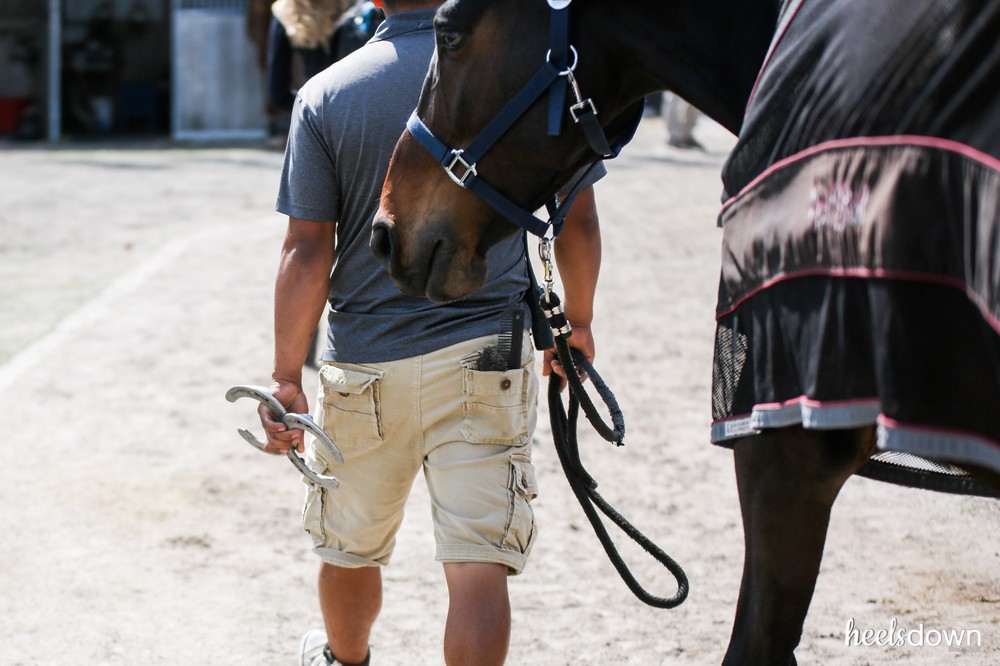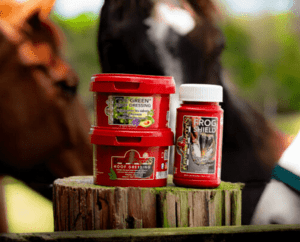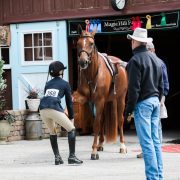Shoe-Pulling Prevention 101, Presented by Wahl

It’s springtime, and it’s muddy. For many horse owners, this means a constant fear of pulled shoes. While you can’t completely prevent it from happening, there are a few steps you can take to keep the odds in your favor.
But why do shoes come off in the mud, anyway? It’s not what you think. “Many people think that when a horse loses a shoe, the mud has sucked it off, but that’s not quite accurate,” says Heather Beauchemin, CJF, TE, a farrier based in northern Illinois and communications chair for the American Farrier’s Association. “In reality, there are a couple of different forces at play.”
First, the horse’s feet sticking in the mud, making each step more laborious. This means the front feet aren’t moving out of the way quick enough, making it easier for the hind feet to catch a front shoe. Also, the slippery mud just makes for less-coordinated horses, making them more likely to step on their own feet. Finally, horses turned out in mud can cause waterlogged hooves, which weakens the horn. “Weakened horn means the hoof wall can easily crumble below the nails, making shoe loss easier than ever. All three of these factors together create the “perfect storm” for shoe loss.”
Ideally, you would limit horses’ turnout time in mud, instead turning out in a limestone paddock, indoor arena, or a grassier area. But, this isn’t always possible, so taking the following actions will help.
Put on bell boots.
“Good quality, sturdy bell boots are your farrier’s best friend. Especially if your horse tends to over-reach, a pair of bell boots can greatly reduce shoe loss.” Make sure that they’re properly fitted, though. When your horse is standing on flat ground or pavement, the back of the bell boots should touch the ground, covering the heels of the shoe.
Remove mud after turnout.
Thoroughly pick your horse’s feet and brush mud off the hoof wall (and off of the bell boots!), allowing them to dry out. “Placing the horse in the stall to dry off in the shavings doesn’t help unless the majority of the mud has already been removed.”
Move your horse.
No, not change barns! But if they have rambunctious friends or are being bullied, place them in another turnout group to lower activity and limit crazy running around.
Shorten the shoe.
Or, at least discuss the possibility with your farrier, as it could cause long-term issues. “Your farrier will have the best feel for whether or not the shoe can be safely shortened. They know your horse and they are very motivated to keep the shoes on, but they also know the importance of keeping a healthy foot.”
And if your horse does pull a shoe, don’t panic. First, call your farrier. Don’t turn your horse back out, as this is often when the most damage is done. “Unlike a horse who is trimmed to be barefoot, a shod hoof has a sharp edge all the way around. When the shoe is pulled off, it is very easy for this sharp edge to break off, leaving less for your farrier to nail the shoe back onto. If the horse must go back out, a boot can help prevent hoof damage.” If your horse is prone to tearing up its foot when barefoot, sometimes a duct tape wrap can keep the foot protected.
But above all, be patient – mud season is really busy for farriers! “A little understanding goes a long way. Your farrier wants to do the absolute best for you and your horse, and your patience allows them to make sure everyone makes it through mud season happy and healthy.”



